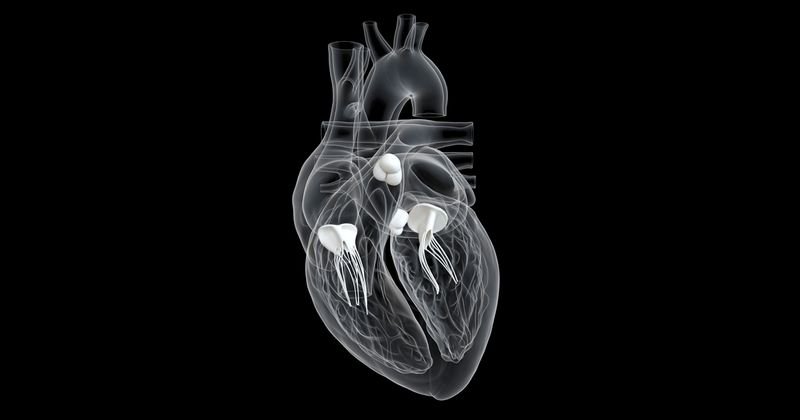TAVR remains noninferior to surgery for low-risk patients at 5 years
Key takeaways:
- At 5 years, there was no difference in death or disabling stroke between transcatheter aortic valve replacement and surgery in patients at low surgical risk.
- Both groups had improvements in quality of life.
CHICAGO — Among patients with severe aortic stenosis at low surgical risk, transcatheter aortic valve replacement and surgery conferred similar rates of death and disabling stroke at 5 years, new data from the Evolut Low Risk Trial show.
The results, presented at the American College of Cardiology Scientific Session and simultaneously published in the Journal of the American College of Cardiology, were consistent with previously reported data from 2 years, 3 years and 4 years.

The trial included 1,414 patients (mean age, 74 years; 35% women) who had severe aortic stenosis and were at low surgical risk who were randomly assigned to TAVR with a self-expanding valve (CoreValve, Evolut R or Evolut PRO; Medtronic) or to surgical AVR.

“We’ve committed to reporting this data frequently and transparently because this is the low-risk population ... which we expect to live a longer time than the intermediate- or high-risk populations,” Michael J. Reardon, MD, the Allison Family Distinguished Chair of Cardiovascular Research and professor of cardiovascular surgery at Houston Methodist and Weill Cornell Medical College, told Healio. “Knowing the data frequently, so you don’t find out later that something snuck up on you, is important. TAVR is going up [in volume], but our guidelines say that if you are [younger] than 65 and expect to live 20 years or more, you should have surgery. Yet, there are some places in this country where more than 50% of people younger than 65 with isolated aortic stenosis are getting TAVR. It’s important for the country to understand that.”
No difference in outcomes
At 5 years, the Kaplan-Meier estimate of the primary outcome of death or disabling stroke was 15.5% in the TAVR group compared with 16.4% in the surgery group (P = .47), the researchers found.
Death occurred in 13.5% of the TAVR group vs. 14.9% of the surgery group (P = .39), whereas disabling stroke occurred in 3.6% of the TAVR group vs. 4% of the surgery group (P = .57), Reardon and colleagues found. After a site-level vital status sweep for patients who were lost to follow-up or withdrew from the study, the rates of death were 14.7% in the TAVR group vs. 15.2% in the surgery group (P = .74).
The rate of CV mortality was 7.2% in the TAVR group vs. 9.3% in the surgery group (P = .15), whereas the rate of non-CV mortality was 6.8% in the TAVR group vs. 6.2% in the surgery group (P = .73), according to the researchers.
“You would expect cardiovascular mortality to be related to how well the valve relieves aortic stenosis and the performance of the valve,” Reardon told Healio. “The delta in favor of Evolut at 2 years is 1.1. The delta in favor of Evolut at 5 years is 2.1. This widening of the curve in favor of TAVR, even though it’s not statistically significant, still gives me great confidence in the performance of Evolut against surgery at 5 years.”
The valve reintervention rate was 3.3% in the TAVR group vs. 2.5% in the surgery group (P = .44), Reardon and colleagues found.
Both groups had sustained improvement in quality of life, with a mean Kansas City Cardiomyopathy Questionnaire score of 88.3 in the TAVR group vs. 88.5 in the surgery group, according to the researchers.
Mean aortic valve gradient was lower at 5 years in the TAVR group compared with the surgery group (10.7 mm Hg vs. 12.8 mm Hg; difference, –2.1; 95% CI, –3 to –1.2; P < .001), whereas mean effective orifice area was larger in the TAVR group (2.1 cm2 vs 1.9 cm2; difference, 0.2; 95% CI, 0.1-0.3; P < .001), the researchers found.
Mild or greater paravalvular leak occurred in 14.7% of the TAVR group and 0.5% of the surgery group at 5 years (risk difference, 14.1 percentage points; 95% CI, 10.8-17.5; P < .001), but almost all of that was mild, and in the TAVR group, patients with mild paravalvular leak at 30 days had a similar mortality rate to those with trace or no paravalvular leak at 30 days (P = .67), according to the researchers.
A viable alternative
With TAVR, compared with surgery, “you’re living just as long, you’re having no more strokes, you’re recovering faster, you’re having no more significant leak around the valve, and at 5 years, the same number is alive and well. I think that speaks very well for this as an alternative to surgery for people at low surgical risk,” Reardon said.
He said the results apply only to patients aged 65 years or older; “less than 65 is still a data-free zone when it comes to TAVR vs. surgery.” The trial also did not include patients with bicuspid valves or those with concomitant procedures other than CABG or PCI. “But within the group that we tested, at 5 years, TAVR still has a very strong appearance compared to surgery,” he said. “Above 65, to me it’s the physiologic risk of surgery vs. the anatomic risk of TAVR, with patient preference built in there. Not all anatomies are going to be ideal for TAVR, whereas we can handle pretty much any anatomy in surgery.”
Reardon said the researchers plan to release data from the trial every year up to 10 years.
Reference:
For more information:
Michael J. Reardon, MD, can be reached at mreardon@houstonmethodist.org.











